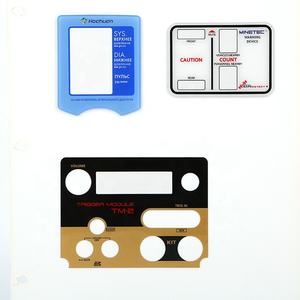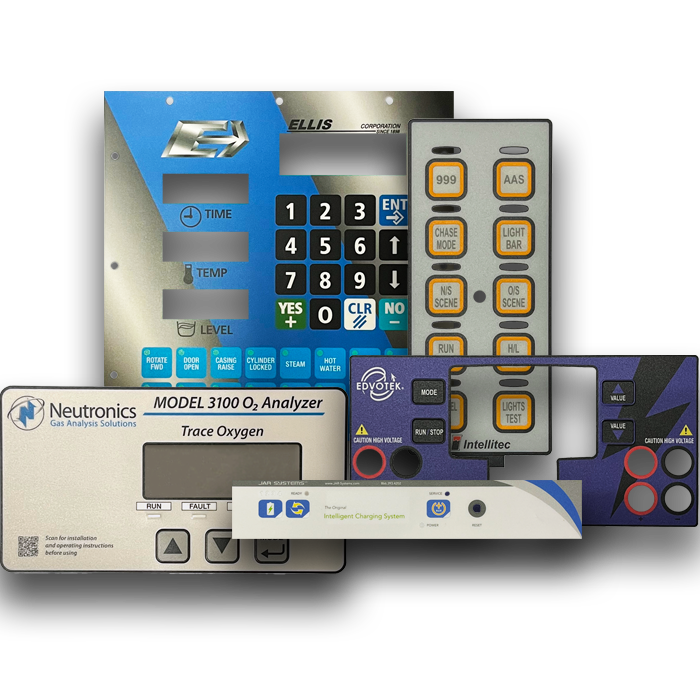The Role of Graphic Overlays and Panels in Enhancing Individual Experience
Graphic panels and overlays offer as crucial elements in electronic user interfaces, substantially affecting individual experience via their ability to boost navigating and offer contextual information. By developing an aesthetic hierarchy and making sure access, these components guide individuals flawlessly while keeping clarity. Their interactive functions not just advertise involvement however additionally cultivate a more user-friendly interaction with material. Understanding the nuances behind their style and implementation elevates vital questions concerning their efficacy and potential restrictions, inevitably forming how we regard user experience in a digital landscape. What ramifications might this have for future user interface design?
Definition of Graphic Overlays
Graphic overlays serve as important components in the realm of user experience style, enhancing the interaction in between customers and electronic interfaces. These graphical aspects are laid over on existing material to give extra details, facilitate navigating, or improve visual allure. Normally, visuals overlays can include text, icons, switches, and aesthetic signs, every one of which play vital functions in guiding customer behavior.
The primary function of graphic overlays is to create interactive layers that boost use without frustrating the individual. By providing relevant details contextually, overlays can enhance the customer journey, making it simpler to access tools or attributes without navigating far from the major material. They usually utilize openness and layering techniques to maintain the exposure of underlying components while making sure that the overlay content remains popular.
Additionally, visuals overlays can be vibrant, reacting to user actions such as hovers or clicks, which improves involvement. They are frequently used in applications, sites, and numerous digital media to provide responses, tutorials, or notifications. In summary, graphic overlays are vital in enriching user experience, mixing capability with aesthetic design to develop user-friendly, interactive settings.
Importance of Visual Pecking Order
Aesthetic power structure plays a substantial function in guiding individual attention and promoting effective communication within graphic overlays and panels. By organizing components in a fashion that mirrors their relative significance, developers can direct customers flawlessly through material, making sure that essential information is easily available.
The establishment of visual hierarchy is accomplished with various design methods, such as dimension, shade, comparison, and spatial setup. Larger components normally stand out, while contrasting colors can highlight specific locations, making them stand apart. Furthermore, grouping associated things with each other through proximity boosts cognitive processing, allowing individuals to swiftly comprehend the information offered.
Integrating a clear aesthetic hierarchy not just improves navigation but also enhances the overall customer experience. Users can efficiently analyze and check material, minimizing cognitive load and minimizing prospective frustration. This structured strategy aids in developing a rational flow, directing users from primary actions to second choices without overwhelming them.
Eventually, a distinct visual hierarchy is vital for developing user-friendly interfaces within graphic overlays and panels. It promotes an extra engaging and user-centric experience, making sure that the style efficiently communicates its intended message while meeting customer needs.
Enhancing Readability and Access
To improve readability and access in visuals overlays and panels, designers should focus on clarity and easy to use formats (Graphic Overlay and Panels). Key aspects consist of typeface choice, size, and comparison, all of which significantly influence just how conveniently users can comprehend information. Sans-serif fonts are often favored for digital user interfaces because of their tidy lines, adding to better clarity on displays

In addition, organizing material via clear headings, subheadings, and bullet factors can improve the user's ability to scan information swiftly. This structured technique allows users to absorb content extra successfully, enhancing general user experience.
Incorporating different message for images and thinking like this about display viewers compatibility are vital for access. By addressing these elements, graphic overlays and panels can deal with a varied target market, making certain that all individuals, despite their capabilities, can access and engage with the details provided properly.
Interactive Attributes and Engagement
Including interactive features into visuals overlays and panels can considerably improve user involvement and experience. By enabling users to connect with aesthetic aspects, designers can create a more immersive environment that encourages exploration and individual connection. Functions such as sliders, clickable buttons, and computer animated symbols can transform fixed information into vibrant web content, enabling customers to manipulate information and obtain prompt responses.
Moreover, interactive overlays can lead customers with complex details, streamlining navigating and increasing retention. Tooltips and pop-up food selections can provide contextual help, making certain customers have the required details at their fingertips without overwhelming them. This tailored strategy assists satisfy varied individual needs and preferences.
Integrating gamification components, such as development bars and benefits for communication, can further incentivize customer involvement. By making the experience gratifying and pleasurable, individuals are extra likely to spend effort and time right into the user interface.
Ultimately, the combination of interactive features in graphic overlays and panels not only boosts visual charm but additionally fosters a much deeper link in between the customer and the material, causing boosted fulfillment and functionality.
Instance Studies and Instances
As developers look for to produce engaging customer experiences, checking out study and real-world instances becomes vital for recognizing the performance of graphic overlays and panels. One noteworthy instance is the implementation of overlay panels in mobile financial applications. A leading economic institution used graphic overlays to improve deal procedures, leading to a 30% boost in user fulfillment. Individuals appreciated the instinctive style that simplified navigating and provided real-time feedback.
One more compelling instance is discovered in the gaming industry, where overlays boost immersion. A preferred pc gaming system incorporated dynamic graphic overlays to present in-game data and player i thought about this efficiency metrics, dramatically improving customer involvement - Graphic Overlay and Panels. Players reported really feeling much more attached to the gameplay, with a 25% boost in session duration observed
Furthermore, e-commerce internet sites have actually leveraged graphic panels to display promotions and item information effectively. A distinguished online seller introduced an overlay panel that highlighted limited-time deals, causing a 40% boost in conversion rates.
These case studies show that when thoughtfully created, graphic overlays and panels not just improve user experience however also drive quantifiable company end results, verifying their worth throughout different markets. (Graphic Overlay and Panels)
Conclusion
In verdict, visuals overlays and panels dramatically enhance customer experience by giving user-friendly navigation and context within digital interfaces. Their tactical design, informed by principles of aesthetic pecking order, makes certain that essential information is stressed while maintaining availability and readability. In addition, interactive features foster individual involvement, resulting in much deeper connections with the material. Ultimately, the thoughtful application of these elements brings about boosted user complete satisfaction and boosted total use in digital environments.
